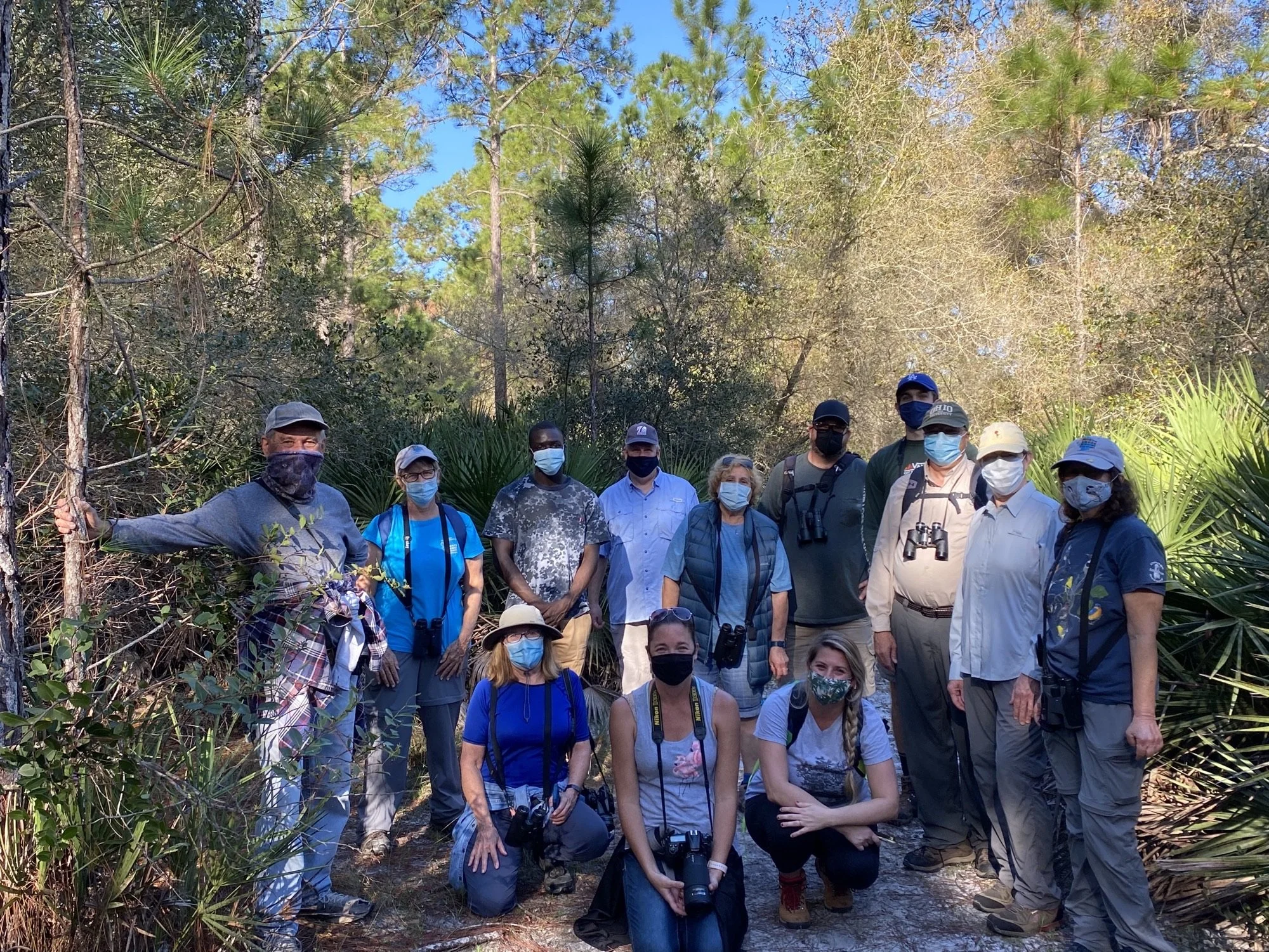History of the
Conservation Collaborative
An Effort to Learn More About Birds
In 2019, a groundbreaking study was published in Science. The study highlighted that North American birds had undergone a staggering decline since the 1970s. In fact, bird numbers in 2019 were approximately 1/3 of what they were in 1970.
With this in mind, Tall Timbers Research Station and Land Conservancy (Tall Timbers) saw a great opportunity with the Cornell Lab of Ornithology’s Land Trust Bird Conservation Initiative. The Initiative offered grants to build partnerships and projects that would help to address bird conservation on private lands.
Tall Timbers holds over 150,000 acres in conservation easements on private land in Georgia and Florida and knew that these lands held incredible populations of declining birds. They also knew that other land trust partners of theirs protected private lands with important populations of declining birds.
In Florida, about 70% of land is in private ownership. In Georgia, about 90% of land is privately owned. Perhaps, if landowners could be empowered to document the birds on their properties, gaps in the distribution of declining bird species could be filled.
Tall Timbers , along with the Alachua Conservation Trust (ACT) and Conservation Florida, decided to create a project that would work to this end.
Filling in the Gaps Between People and Birds
The first phase of this project kicked off in late 2020 with a $5,000 grant. The partners sought to do the following:
Fill distribution gaps for at least 10 species listed in the Georgia and Florida State Wildlife Action Plans.
Add at least 100 checklists from project properties into eBird within 1 year.
Positively interact with at least 30 private landowners through regional workshops.
Engage with at least 9 staff from land trusts in Florida and Georgia.
Connect at least 50 volunteers from 3 Audubon chapters to new birding locations.
The three land trusts partnered with their local Audubon chapters (pictured below) to help implement the project, these being Apalachee Audubon Society , Alachua Audubon Society , and Orange Audubon Society.
Some helpful results were collected from this first phase of the project, which you can read about more in our StoryMap by clicking on the button below:
Forming A Conservation Collaborative
Eastern meadowlark (Sturnella magna). Photo courtesy of Cornell Lab of Ornithology, Macaulay Library.
Bachman’s sparrow (Peucaea aestivalis). Photo by
Tedd Greenwald.
ACT and Tall Timbers were eager to grow their partnership further, while also expanding the impact for declining bird species. The Cornell Lab of Ornithology’s Land Trust Bird Conservation Initiative offers another grant opportunity for projects focused on land management, and the land trusts decided to go for it.
Both ACT and Tall Timbers were interested in getting more fire on the ground. In particular, staff wanted to see growing season prescribed fires be applied more frequently on privately-owned lands. Often, landowners state that their reasons for not implementing these burns is due to their fear of negatively impacting bird species like wild turkey and Northern bobwhite quail. The two land trusts sought to change that perception and work to get more growing season burns implemented.
To help build upon their relationships with private landowners, the two land trusts invited their in-house prescribed fire teams, the North Florida Prescribed Burn Association, and the Florida Fish & Wildlife Conservation Commission to participate in prescribed burning efforts on private lands. Two Audubon chapters from the earlier phase of this project - Apalachee Audubon and Alachua Audubon - also returned to assist with conducting pre- and post-burn bird surveys on selected lands.
The land trusts focused on restoring wildlife habitat through growing season prescribed fire for three declining bird species - Eastern meadowlark (Sturnella magna), Bachman’s sparrow (Peucaea aestivalis), and Northern bobwhite quail (Colinus virginianus).
Were they successful in bringing more prescribed fire to private lands, shifting landowner perceptions about growing season fire, and increasing quality habitat for birds and other wildlife? Read about this second phase of the project and the results in our StoryMap Collection by clicking on the button below:
Northern bobwhite (Colinus virginianus). Photo by Tom Mast, Cornell Lab of Ornithology, Macaulay Library.
Expanding the Burning for Birds Conservation Collaborative
After two successful project phases with promising initial results for both birds and private lands, ACT and Tall Timbers were eager to see their efforts grow along with their established partnerships. With an invitation from the Cornell Lab to apply for additional funding, the two land trusts began to look towards expanding the collaborative regionally with new land trust and conservation partners in Florida, Georgia, and South Carolina.
In 2023, the collaborative welcomed three new partners: Aiken Land Conservancy located in Aiken, South Carolina; the Georgia Conservancy based in Atlanta, Georgia; and Putnam Land Conservancy located in Hawthorne, Florida.
With a larger project area and new partners stretching across the Southeastern U.S., the collaborative recognized that burning for the benefit of birds may look different for each organization, partner, and landowner depending upon the goals of the organization or landowner, history of fire on the proposed project sites, and the landowner’s comfort level with prescribed fire during different seasons. The partners each set out to design smaller projects that would incorporate applying prescribed fire in different seasons, benefit declining bird species in their working areas, and benefit lands where habitat restoration was most needed.
To dive into this third phase of the Burning for Birds Conservation Collaborative, learn more about each partner’s project, and view updates as they are implemented, visit our Partners page below:














